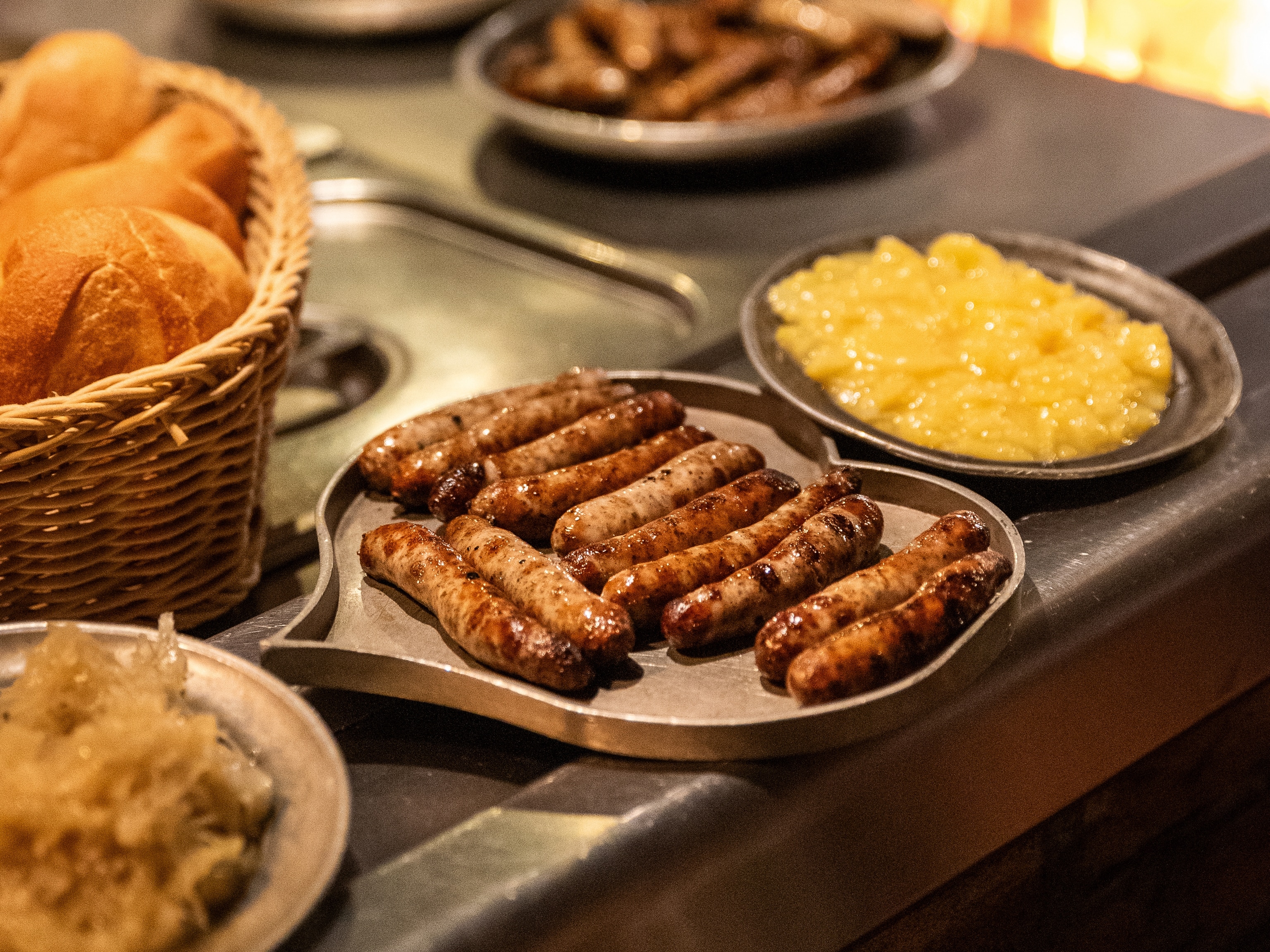
How to make perfect pierogi, Poland's famous dumplings
These Polish dumplings can be filled with cheese, wild mushrooms, fruit or just about anything else you can think of.
Pierogi are the quintessential Polish filled dumplings. Origin stories vary, but one theory is they came from the Far East, and they certainly started out as peasant food. There’s even a prayer to Saint Jacek (considered the patron saint of pierogi) to make sure the dumplings are always on the table and stave away hunger.
1. Dough
The most traditional pierogi dough is made simply with flour, rapeseed oil, a little bit of salt and warm water. Nowadays, every Polish household has its own favourite recipe, and many people use eggs in theirs — an addition thought to have come to Poland from Italy, like many other culinary influences.
2. Kneading
Once the dough has been brought together, it must be kneaded for roughly 7-8 minutes before being covered and rested for about 20-30 minutes. Resting makes the dough more malleable and easier to work with, so you can roll the dough out more thinly, and the pierogi will therefore be more delicate.
3. Filling
The most popular filling is white twaróg cheese, caramelised onion and potatoes. During summer in Poland, sweet, fruit pierogi are a favourite, while the Christmas classic is wild mushroom and sauerkraut. There are meat versions and regional variations, but almost any finely chopped leftovers can make a filling.
4. Cutting and pinching
The rim of a glass is perfect for cutting circles out of your thinly rolled dough. Place a spoonful of filling in the centre of a dough circle and close it into a half-moon shape before pressing along the edges with your thumb and index finger. You can also seal around the edges with a fork or try a decorative pinching technique.
5. Cooking and serving
Traditional pierogi are always boiled first in salted water. Afterwards, you can fry them in some oil or butter until crispy, if you like (I always do). Finally, you can add an ‘okrasa’, meaning a topping — it could be some crispy fried onion or bacon bits. Every pierogi, whether sweet or savoury, goes well with sour cream, too.
Related Topics
You May Also Like
Go Further
Animals
- Charlotte, the 'virgin birth' stingray, has a diseaseCharlotte, the 'virgin birth' stingray, has a disease
- See how billions of cicadas are taking over the U.S. this summerSee how billions of cicadas are taking over the U.S. this summer
- Why are orcas ramming boats? They might just be bored teenagersWhy are orcas ramming boats? They might just be bored teenagers
- These pelicans are starving to death—despite plenty to eatThese pelicans are starving to death—despite plenty to eat
- The world's largest fish are vanishing without a traceThe world's largest fish are vanishing without a trace
Environment
- 2024 hurricane season forecasted to be record-breaking year2024 hurricane season forecasted to be record-breaking year
- Connecting a new generation with South Africa’s iconic species
- Paid Content
Connecting a new generation with South Africa’s iconic species - These images will help you see coral reefs in a whole new wayThese images will help you see coral reefs in a whole new way
- What rising temps in the Gulf of Maine mean for wildlifeWhat rising temps in the Gulf of Maine mean for wildlife
- He’s called ‘omacha,’ a dolphin that transforms into a man. Why?He’s called ‘omacha,’ a dolphin that transforms into a man. Why?
History & Culture
- Think customer service is bad now? Read this ancient complaintThink customer service is bad now? Read this ancient complaint
- The tragic backstory of one of the most haunted roads in AmericaThe tragic backstory of one of the most haunted roads in America
- The missing heiress at the center of New York’s oldest cold caseThe missing heiress at the center of New York’s oldest cold case
- When a people's stories are at risk, who steps in to save them?When a people's stories are at risk, who steps in to save them?
- I wrote this article with a 18th century quill. I recommend it.I wrote this article with a 18th century quill. I recommend it.
- Why this Bronze Age village became known as ‘Britain’s Pompeii’Why this Bronze Age village became known as ‘Britain’s Pompeii’
Science
- How being the oldest or youngest sibling shapes your personalityHow being the oldest or youngest sibling shapes your personality
- Tuberculosis is rising in the U.S. again. How did we get here?Tuberculosis is rising in the U.S. again. How did we get here?
- Are ultra-processed foods as addictive as cigarettes?Are ultra-processed foods as addictive as cigarettes?
- Epidurals may do more than relieve pain—they could save livesEpidurals may do more than relieve pain—they could save lives
Travel
- What to eat in Lebanon, from flatbreads to layered dessertsWhat to eat in Lebanon, from flatbreads to layered desserts
- This sunny German city should top your summer travel list
- Paid Content
This sunny German city should top your summer travel list - 7 things you need to know about European travel this summer7 things you need to know about European travel this summer




